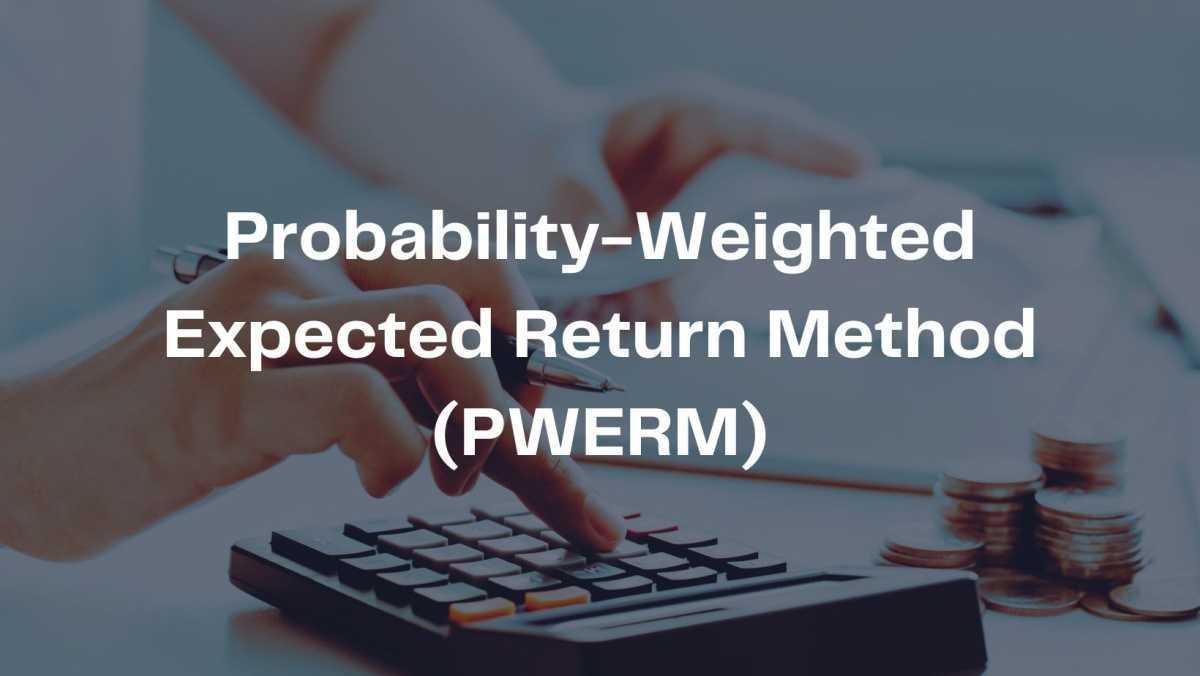The Probability-Weighted Expected Return Method (PWERM) is a scenario-based approach primarily used in valuing equity interests in early-stage companies, complex capital structures, or when future outcomes are highly uncertain. This method involves estimating the potential future outcomes, assigning probabilities to each outcome, and discounting the expected returns to present value.
Procedures to Perform the Probability-Weighted Expected Return Method (PWERM)
1. Define the Valuation Context
- Establish the purpose of the valuation (e.g., financial reporting, transaction support, equity compensation).
- Determine the valuation date.
- Understand the subject company’s business model, financial performance, and strategic plans.
2. Identify Potential Future Scenarios
- Develop discrete future scenarios that could impact the company’s valuation. Common scenarios include:
- Liquidity Event Scenarios: IPO, sale of the company, merger, or acquisition.
- Stay-Private Scenarios: Continued operation without a liquidity event.
- Downside Scenarios: Bankruptcy, liquidation, or underperformance.
- Each scenario should reflect a distinct financial and strategic outcome.
3. Estimate the Value Under Each Scenario
- For each scenario, estimate the company's future equity value or the value of specific equity interests considering:
- Market comparables (e.g., valuation multiples)
- Discounted cash flow (DCF) analysis
- Expected proceeds from a transaction or liquidation
Example Scenario Analysis:
| Scenario | Estimated Future Equity Value | Description |
|---|---|---|
| IPO Scenario | $200 million | Successful IPO at a high valuation |
| Acquisition Scenario | $150 million | Sale of the company to a strategic buyer |
| Base Case | $100 million | Continued private operations |
| Downside Scenario | $20 million | Liquidation or bankruptcy |
4. Assign Probability to Each Scenario
- Assign a probability to each scenario based on management’s insights, market conditions, and industry analysis.
- Ensure that the probabilities sum up to 100%.
Example Probability Assignment:
| Scenario | Probability |
|---|---|
| IPO Scenario | 30% |
| Acquisition Scenario | 25% |
| Base Case | 35% |
| Downside Scenario | 10% |
5. Calculate the Expected Return
- Multiply the estimated value under each scenario by its associated probability to calculate the expected return.
6. Discount the Expected Return to Present Value
- Select an appropriate discount rate that reflects the risk of the subject company and the uncertainty of the scenarios.
- Discount the expected return back to the present value using the formula:
Where:
- r = Discount rate
- t = Time to liquidity event or realization of the scenario
7. Apply Additional Adjustments (if necessary)
- Consider adjustments for:
- Marketability Discounts: If the equity interest is not easily tradable.
- Control Premiums or Discounts: Depending on the ownership stake being valued.
- Dilution Effects: Impact of future financing or conversion of existing instruments.
8. Reconcile and Finalize the Valuation
- Review the calculated present value in the context of market conditions and comparable transactions.
- Ensure the valuation methodology aligns with relevant standards


